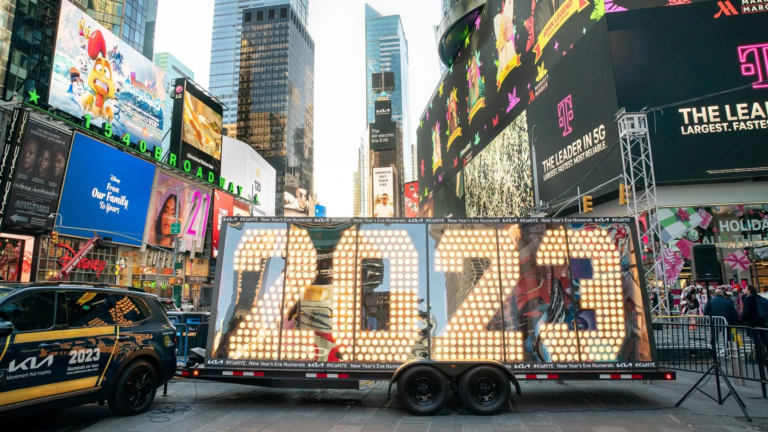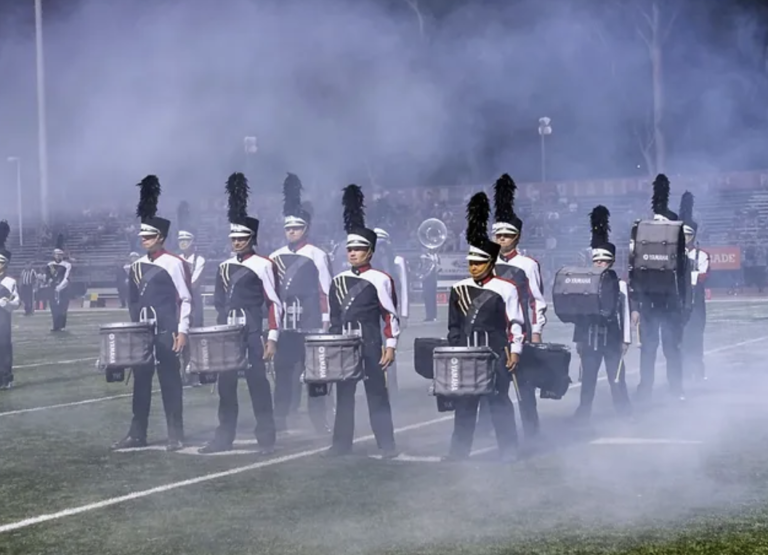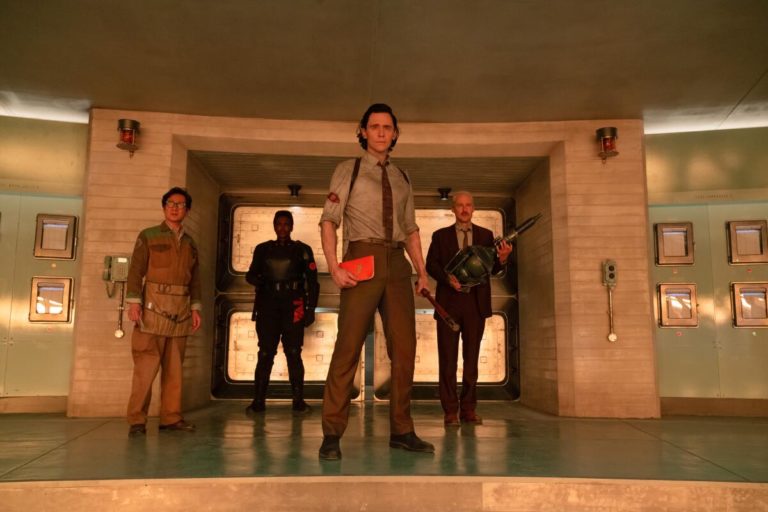In the year of 2024, there were many influential movies, television shows, actors, and artists. As January and February roll around, awards season takes place. The Grammys, Emmys, and many more award shows shine the spotlight on these artistic forms of expression in both film and music. Many are eager to see the results in hopes that some of their personal favorites take the trophy home.
The Critics’ Choice Awards was a recently held and well-known award show. The C.C. Awards focus on the film industry: movies, television shows, talk shows, actors, and actresses. Chelsea Handler hosted the night’s ceremony, broadcasting live on CW. It was located at Santa Monica’s Barker Hangar.
There were many surprises for the viewers and winners that were presented on January 14, 2024. The most awards received were the films “Oppenheimer” and “Barbie.”
Here is a look at the full list of winners below.
FILM
- Best Picture: “Oppenheimer” (Universal Pictures)
- Best Actor: Paul Giamatti – The Holdovers
- Best Actress: Emma Stone – Poor Things
- Best Supporting Actor: Robert Downey Jr. – Oppenheimer
- Best Supporting Actress: Da’Vine Joy Randolph – The Holdovers
- Best Young Actor/Actress: Dominic Sessa – The Holdovers
- Best Acting Ensemble: Oppenheimer
- Best Director: Christopher Nolan – Oppenheimer
- Best Original Screenplay: Barbie – Greta Gerwig, Noah Baumbach
- Best Adapted Screenplay: America Fiction – Cord Jefferson
- Best Cinematography: Hoyte van Hoytema – Oppenheimer
- Best Production Design: Sarah Greenwood, Katie Spencer – Barbie
- Best Editing: Jennifer Lame – Oppenheimer
- Best Costume Design: Jacqueline Durran – Barbie
- Best Hair and Makeup: Barbie
- Best Visual Effects: Oppenheimer
- Best Comedy: Barbie
- Best Animated Feature: Spider-Man: Across the Spider-Verse
- Best Foreign Language Film: Anatomy of a Fall
- Best Original Song: “I’m Just Ken” – Barbie
- Best Score: Oppenheimer
TELEVISION:
- Best Drama Series: “Succession” (HBO)
- Best Actor in a Drama Series: Kieran Culkin, “Succession”
- Best Actress in a Drama Series: Sarah Snook, “Succession”
- Best Supporting Actor in a Drama Series: Billy Crudup, “The Morning Show”
- Best Supporting Actress in a Drama Series: Elizabeth Debicki, “The Crown”
- Best Comedy Series: “The Bear” (FX)
- Best Actor in a Comedy Series: Jeremy Allen White, “The Bear”
- Best Actress in a Comedy Series: Ayo Edebiri, “The Bear”
- Best Supporting Actor in a Comedy Series: Ebon Moss-Bachrach, “The Bear”
- Best Supporting Actress in a Comedy Series: Meryl Streep, “Only Murders in the Building”
- Best Limited Series: “Beef” (Netflix)
- Best Movie Made for Television: “Quiz Lady” (Hulu)
- Best Actor in a Limited Series or Movie Made for Television: Steven Yeun, “Beef”
- Best Actress in a Limited Series or Movie Made for Television: Ali Wong, “Beef”
- Best Supporting Actor in a Limited Series or Movie Made for Television: Jonathan Bailey, “Fellow Travelers” (Showtime)
- Best Supporting Actress in a Limited Series or Movie Made for Television: Maria Bello, “Beef”
- Best Foreign Language Series: Lupin (Netflix)
- Best Animated Series: Scott Pilgrim Takes Off (Netflix)
- Best Talk Show: Last Week Tonight with John Oliver (HBO)
- Best Comedy Special: John Mulaney: Baby J (Netflix)
The day after the Critics’ Choice Awards, the 75th annual Emmys Award Show took place. The first Emmys took place on January 25, 1949 to celebrate and recognize the excellence in American television programming.
The current day Emmys are similar to the Critics’ Choice Awards, but focus on presenting awards to television shows and variety shows. It is now available to watch and stream on Hulu for viewers’ enjoyment.
Held in the Peacock Theater in Los Angeles and hosted by Anthony Anderson, there were many noteworthy first-time winners. The night’s most successful victors at the awards ceremony were the shows, “The Bear,” “Beef,” and “Succession.”
This is the full list of all the Emmys winners of the year 2024:
- Best Comedy: “The Bear” (FX)
- Best Drama: “Succession” (HBO)
- Best Limited Series: “Beef” (Netflix)
- Best Actress (Comedy): Quinta Brunson, “Abbott Elementary”
- Best Actor (Comedy): Jeremy Allen White, “The Bear”
- Best Actress (Drama): Sarah Snook, “Succession”
- Best Actor (Drama): Kieran Culkin, “Succession”
- Best Actress (Limited Series or TV Movie): Ali Wong, “Beef”
- Best Actor (Limited Series or TV Movie): Steven Yeun, “Beef”
- Supporting Actress (Drama): Jennifer Coolidge, “The White Lotus”
- Supporting Actor (Drama): Matthew Macfadyn, “Succession”
- Supporting Actress (Limited Series or TV Movie): Niecy Nash-Betts, “Monster: The Jeffrey Dahmer Story”
- Supporting Actor (Limited Series or TV Movie): Paul Walter Hauser, “Black Bird”
-
Variety Talk Series: “The Daily Show With Trevor Noah” (Comedy Central)
-
Scripted Variety Series: “Last Week Tonight with John Oliver” (HBO)
- Outstanding Variety Special (Live): Elton John Live: Farewell From Dodger Stadium (Disney+)
- Reality Competition Program: “Rupaul’s Drag Race” (MTV)
- Writing for a Comedy Series: Christopher Storer, “The Bear” (“System”)
- Writing for a Drama Series: Jesse Armstrong, “Succession” (“Connor’s Wedding”)
- Writing for a Limited Series, Movie, or Drama Special: Lee Sung Jin, “Beef” (“The Birds Don’t Sing, They Screech in Pain”)
- Directing for a Comedy Series: Christopher Storer, “The Bear” (“Review”)
- Directing for a Drama Series: Mark Mylod, “Succession” (Connor’s Wedding”)
- Directing for a Limited Series: Lee Sung Jin, “Beef” (“Figure of Light”)
- Documentary or Nonfiction Series: “The 1619 Project” (Hulu)
- Documentary or Nonfiction Special: “Still: A Michael J. Fox Movie” (Apple TV+)
The 66th annual Grammys came out on February 4, 2024. Insanely popular among the music-loving fans, this year has some amazing candidates that left viewers excited. It focuses on music and artists that have changed the year of 2023.
The first ever Grammys took place on May 4, 1959. The past and the present gives recognition to the best of the music or recording industry.
The night’s most successful artists were Phoebe Bridgers with four trophies (three with her band, boygenius), Victoria Monet, SZA, boygenius, Killer Mike, Billie Eilish, Miley Cyrus, and Taylor Swift. Swift had a memorable night, breaking the record for most album wins and in turn becoming the first artist to earn four album of the year prizes.
The highlights of the Grammys were Taylor’s announcement of her new album coming out in April, Joni Mitchell performing at the Grammys for the first time, and Tracy Chapman’s surprise performance was greatly recognized by viewers.
The full list of winners:
- Record of the Year: “Flowers” by Miley Cyrus
- Album of the Year: “Midnights” by Taylor Swift
- Song of the Year: “What Was I Made For?” by Billie Eilish
- Best New Artist: Victoria Monet
- Producer of the Year (Non-classical): Jack Antonoff
- Songwriter of the Year (Non-classical): Theron Thomas
- Best Pop Solo Performance: “Flowers” by Miley Cyrus
- Best Pop/Duo Performance: “Ghost in the Machine” by SZA ft. Phoebe Bridgers
- Best Pop Vocal Album: “Midnights” by Taylor Swift
- Best Dance/Electronic Recording: “Rumble” by Skrillex, Fred again.. and Flowdan
- Best Pop Dance Recording: “Padam Padam” by Kylie Minogue
- Best Dance/Electronic Music Album: “Actual Life 3 (January 1 – September 9 2022) by Fred again..
- Best Rock Performance: “Not Strong Enough” by boygenius
- Best Metal Performance: “72 Seasons” by Metallica
- Best Rock Song: “Not Strong Enough” by Julien Baker, Phoebe Bridgers, and Lucy Dacus, songwriters (boygenius)
- Best Rock Album: “This Is Why” by Paramore
- Best Alternative Music Performance: “This Is Why” by Paramore
- Best Alternative Music Album: “The Record” by boygenius
- Best R&B Performance: “ICU” by Coco Jones
- Best Traditional R&B Performance: “Good Morning” by PJ Morton ft. Susan Carol
- Best R&B Song: “Snooze” by SZA
- Best Progressive R&B Album: “SOS” by SZA
- Best R&B Album: “JAGUAR II” by Victoria Monet
- Best Rap Performance: “SCIENTISTS & ENGINEERS” by Killer Mike ft. Andre 3000, Future and Eryn Allen Kane
- Best Melodic Rap Performance: “All My Life” by Lil Durk ft. J. Cole
- Best Rap Song: “SCIENTISTS & ENGINEERS” by Andre Benjamin, Paul Beauregard, James Blake, Michael Render, Tim Moore, Dion Wilson, and songwriters
- Best Rap Album: “Michael” by Killer Mike
- Best Spoken Word Poetry Album: “The Light Inside” by J. Ivy
- Best Jazz Performance: “Tight” by Samara Joy
- Best Jazz Vocal Album: “How Love Begins” by Nicole Zuraitis
- Best Jazz Instrumental Album: “The Winds of Change” by Billy Childs
- Best Large Jazz Ensemble Album: “Basie Swings the Blues” by The Count Basie Orchestra directed by Scotty Barnhart
- Best Latin Jazz Album: “El Arte Del Bolero Vol. 2” by Miguel Zenón and Luis Perdomo
- Best Alternative Jazz Album: “The Omnichord Real Book” by Meshell Ndegeocello
- Best Traditional Pop Vocal Album: “Bewitched” by Laufey
- Best Contemporary Instrumental Album: “As We Speak” by Béla Fleck, Zakir Hussain, Edgar Meyer, featuring Rakesh Chaurasia
- Best Musical Theater Album: “Some Like It Hot” by Christian Borle, J. Harrison Ghee, Adrianna Hicks and NaTasha Yvette Williams, principal vocalists; Mary-Mitchell Campbell, Bryan Carter, Scott M. Riesett, Charlie Rosen and Marc Shaiman, producers; Scott Wittman, lyricist; Marc Shaiman, composer and lyricist (Original Broadway Cast)
- Best Country Solo Performance: “White Horse” by Chris Stapleton
- Best Country Duo/Group Performance: “I Remember Everything” by Zach Bryan featuring Kacey Musgraves
- Best Country Song: “White Horse,” Chris Stapleton and Dan Wilson, songwriters (Chris Stapleton)
- Best Country Album: “Bell Bottom Country,” Lainey Wilson
- Best American Roots Performance: “Eve Was Black,” Allison Russell
- Best Americana Performance: “Dear Insecurity,” Brandy Clark featuring Brandi Carlile
- Best American Roots Song: “Cast Iron Skillet,” Jason Isbell, songwriter (Jason Isbell and the 400 Unit)
- Best Americana Album: “Weathervanes,” Jason Isbell and the 400 Unit
- Best Bluegrass Album: “City of Gold,” Molly Tuttle & Golden Highway
- Traditional Blues Album:“All My Love for You,” Bobby Rush
- Best Contemporary Blues Album: “Blood Harmony,” Larkin Poe
- Best Folk Album: “Joni Mitchell at Newport (Live),” Joni Mitchell
- Best Regional Roots Music Album: “New Beginnings,” Buckwheat Zydeco Jr. and the Legendary Ils Sont Partis B and
- “Live: Orpheum Theater Nola,” Lost Bayou Ramblers and Louisiana Philharmonic Orchestra (tie)
- Best Gospel Performance/Song: “All Things,” Kirk Franklin; Kirk Franklin, songwriter
- Best Contemporary Christian Music Performance/Song: “Your Power,” Lecrae and Tasha Cobbs Leonard
- Best Gospel Album: “All Things New: Live in Orlando,” Tye Tribbett
- Best Contemporary Christian Music Album: “Church Clothes 4,” Lecrae
- Best Roots Gospel Album: “Echoes of the South,” Blind Boys of Alabama
- Best Latin Pop Album: “X Mí (Vol. 1),” Gaby Moreno
- Best Musica Urbana Album: “Mañana Será Bonito,” Karol G
- Best Latin Rock or Alternative Album: “Vida Cotidiana,” Juanes
- “De Todas Las Flores,” Natalia Lafourcade (tie)
- Best Musica Mexicana Album (Including Tejano): “Génesis,” Peso Pluma
- Best Tropical Latin Album: “Siembra: 45° Aniversario (En Vivo en el Coliseo de Puerto Rico, 14 de Mayo 2022),” Rubén Blades con Roberto Delgado and Orquesta
- Best Global Music Performance: “Pashto,” Béla Fleck, Edgar Meyer and Zakir Hussain featuring Rakesh Chaurasia
- Best African Music Performance: “Water,” Tyla
- Best Global Music Album: “This Moment,” Shakti
- Best Reggae Album: “Colors of Royal,” Julian Marley & Antaeus
- Best New Age, Ambient, or Chant Album: “So She Howls,” Carla Patullo featuring Tonality and the Scorchio Quartet
- Best Children’s Music Album: “We Grow Together Preschool Songs,” 123 Andrés
- Best Comedy Album: “What’s in a Name?,” Dave Chappelle
- Best Audiobook, Narration, and Storytelling Recording: “The Light We Carry: Overcoming in Uncertain Times,” Michelle Obama
- Best Compilation Soundtrack for Visual Media: “Barbie: The Album” (Various Artists)
- Best Score Soundtrack for Visual Media (Includes Film and Television): “Oppenheimer,” Ludwig Göransson, composer
- Best Score Soundtrack for Video Games and other Interactive Media: “Star Wars Jedi: Survivor,” Stephen Barton and Gordy Haab, composers
- Best Song Written for Visual Media: “What Was I Made For?” from “Barbie: The Album,” Billie Eilish O’Connell and Finneas O’Connell, songwriters (Billie Eilish)
- Best Music Video: “I’m Only Sleeping” (The Beatles), Em Cooper, video director; Jonathan Clyde, Sophie Hilton, Sue Loughlin and Laura Thomas, video producers
- Best Music Film: “Moonage Daydream” (David Bowie), Brett Morgen, video director; Brett Morgen, video producer
- Best Recording Package: “Stumpwork,” Luke Brooks and James Theseus Buck, art directors (Dry Cleaning)
- Best Boxed or Special Limited Edition Package: “For the Birds: The Birdsong Project,” Jeri Heiden and John Heiden, art directors (Various Artists)
- Best Album Notes: “Written in Their Soul: The Stax Songwriter Demos,” Robert Gordon and Deanie Parker, album notes writers (Various Artists)
- Best Historical Album: “Written in Their Soul: The Stax Songwriter Demos,” Robert Gordon, Deanie Parker, Cheryl Pawelski, Michele Smith and Mason Williams, compilation producers; Michael Graves, mastering engineer; Michael Graves, restoration engineer (Various Artists)
- Best Engineered Album, Non-classical: “Jaguar II,” John Kercy, Kyle Mann, Victoria Monét, Patrizio “Teezio” Pigliapoco, Neal H Pogue and Todd Robinson, engineers; Colin Leonard, mastering engineer (Victoria Monét)
- Best Engineered Album, Classical: “Contemporary American Composers,” David Frost & Charlie Post, engineers; Silas Brown, mastering engineer (Riccardo Muti and Chicago Symphony Orchestra)
- Producer of the Year, Classical: Elaine Martone
- Best Remixed Recording: “Wagging Tongue (Wet Leg Remix),” Wet Leg, remixers (Depeche Mode)
- Best Immersive Audio Album: “The Diary of Alicia Keys,” George Massenburg and Eric Schilling, immersive mix engineers; Michael Romanowski, immersive mastering engineer; Alicia Keys and Ann Mincieli, immersive producers (Alicia Keys)
- Best Instrumental Composition: “Helena’s Theme,” John Williams, composer (John Williams)
- Best Arrangement, Instrumental, or a Cappella: “Folsom Prison Blues,” John Carter Cash, Tommy Emmanuel, Markus Illko, Janet Robin and Roberto Luis Rodriguez, arrangers (The String Revolution featuring Tommy Emmanuel)
- Best Arrangement, Instruments, and Vocals: “In the Wee Small Hours of the Morning,” Erin Bentlage, Jacob Collier, Sara Gazarek, Johnaye, Kendrick and Amanda Taylor, arrangers (säje Featuring Jacob Collier)
- Best Orchestral Performance: “Adès: Dante,” Gustavo Dudamel, conductor (Los Angeles Philharmonic)
- Best Opera Recording: “Blanchard: Champion,” Yannick Nézet-Séguin, conductor; Ryan Speedo Green, Latonia Moore and Eric Owens; David Frost, producer (The Metropolitan Opera Orchestra; The Metropolitan Opera Chorus)
- Best Choral Performance: “Saariaho: Reconnaissance,” Nils Schweckendiek, conductor (Uusinta Ensemble; Helsinki Chamber Choir)
- Best Chamber Music/Small Ensemble Performance: “Rough Magic,” Roomful of Teeth
- Best Classical Instrumental Solo: “The American Project,” Yuja Wang; Teddy Abrams, conductor (Louisville Orchestra)
- Best Classical Solo Vocal Album: “Walking in the Dark,” Julia Bullock, soloist; Christian Reif, conductor (Philharmonia Orchestra)
- Best Classical Compendium:“Passion for Bach and Coltrane,” Alex Brown, Harlem Quartet, Imani Winds, Edward Perez, Neal Smith and A.B. Spellman; Silas Brown and Mark Dover, producers
- Best Contemporary Classical Composition: “Montgomery: Rounds,” Jessie Montgomery, composer (Awadagin Pratt, A Far Cry and Roomful of Teeth)
Film and music shape everyone’s lives one day at a time, continuing to spread the art of creativity through a camera or recording studio. In the year of 2024, there are bright hopes in which albums or movies that will be released throughout the year.










